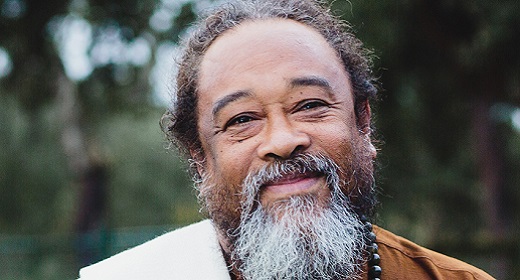by Dr. Alberto Villoldo: Thoughts are different from ideas:

An idea is when it occurs to you to go to the store or attend a yoga class, while a thought is the incessant brain chatter that’s turned on the minute you wake up. Thoughts are often long-winded: If I go to the store now, I won’t have enough time to make my yoga class, and then I know I’ll be out of sorts, so maybe I should go to yoga first. Or a thought may be a judgment: That yoga class is too hard.
Unlike ideas, which are fresh and original, thoughts are memories that are triggered by something in the present. For example, if you smell a rose, you’re there in the fragrant moment, not pulling yourself back to think about the scent. Yet as soon as you think rose or red, you’re making an association with something you learned, thus removing yourself from the experience. When there is no thought, there is just the scent; when thoughts enter the picture, you lose the moment.
In fact, most of our thoughts are disguised memories of experiences that occurred in the early years of our lives, before we were born, or even in former lifetimes. When we were kids, we placed everything in our mouths and tasted the world. Later we played for hours in the sandbox or with our toys and got lost in daydreams. Then around the age of seven, thoughts began to appear in force: We started to acquire a sense of self and discover where we ended, and the world began. We were no longer absorbed in the realm of touch, taste, smell, and feel. Prior to this time, we had no thoughts—we only had experiences. Afterward, our authentic experiences became fewer and fewer until, in our old age, we become haunted by continual thoughts of what once was.
Every thought that rumbles around in your brain is a replay of a drama in which you were the victim, rescuer, or perpetrator. Stop for a moment and listen: What are you thinking of at this very moment? Remember that thoughts are not original, brilliant, or creative—your instinct, ideas, and ability to dream are.
We find it impossible to think outside the box because thoughts are the box. And when we identify with our thoughts, we suffer a case of mistaken identity. I am not my thoughts, I simply have them, in the same way that I’m not my car, my house, or my clothes (although I have those as well). And we know what kind of trouble we get into when we believe that we are our car, our home, or our clothes; and we try to fix a problem by buying Chanel couture or a new set of golf clubs.
Thoughts are like dust that settles on our skin during a long journey, forming a thick crust. After a while we begin to rub a spot raw to get down to our real selves. What we need to do is stop rubbing off the dust in a few places here and there, like we do with therapy, and get out the fire hose to wash it all off. The Laika developed energetic practices that accomplish this in a very short time, by clearing the imprints from our past that become etched in our luminous energy field.
Pause for a moment and become aware of how your thoughts appear and disappear, without identifying with them. Close your eyes and observe your thoughts as if they were clouds forming in an empty sky and then dissolving again. Don’t chase them or try to stop or control them—simply observe them. Notice how after a few moments you’ve drifted off onto a chain of thoughts and have forgotten your observation altogether.
Take a deep breath and witness once again the flurry of thoughts that race through the empty sky of your awareness. Don’t try to control them, because this is when the mind appears, eager to “solve” all the problems it can. The mind thrives on conflict: When you stop the one within you, the mind disappears, thoughts melt away, and only the sage remains.
The mind is afraid that you’ll discover it doesn’t exist, and it fiercely wants you to pay attention to it and value it. But once you discover the sage, you’ll wash off the dust from a thousand lifetimes and be left with baby-soft skin through which to experience the world. You will have lost your mind and come to your senses.







































